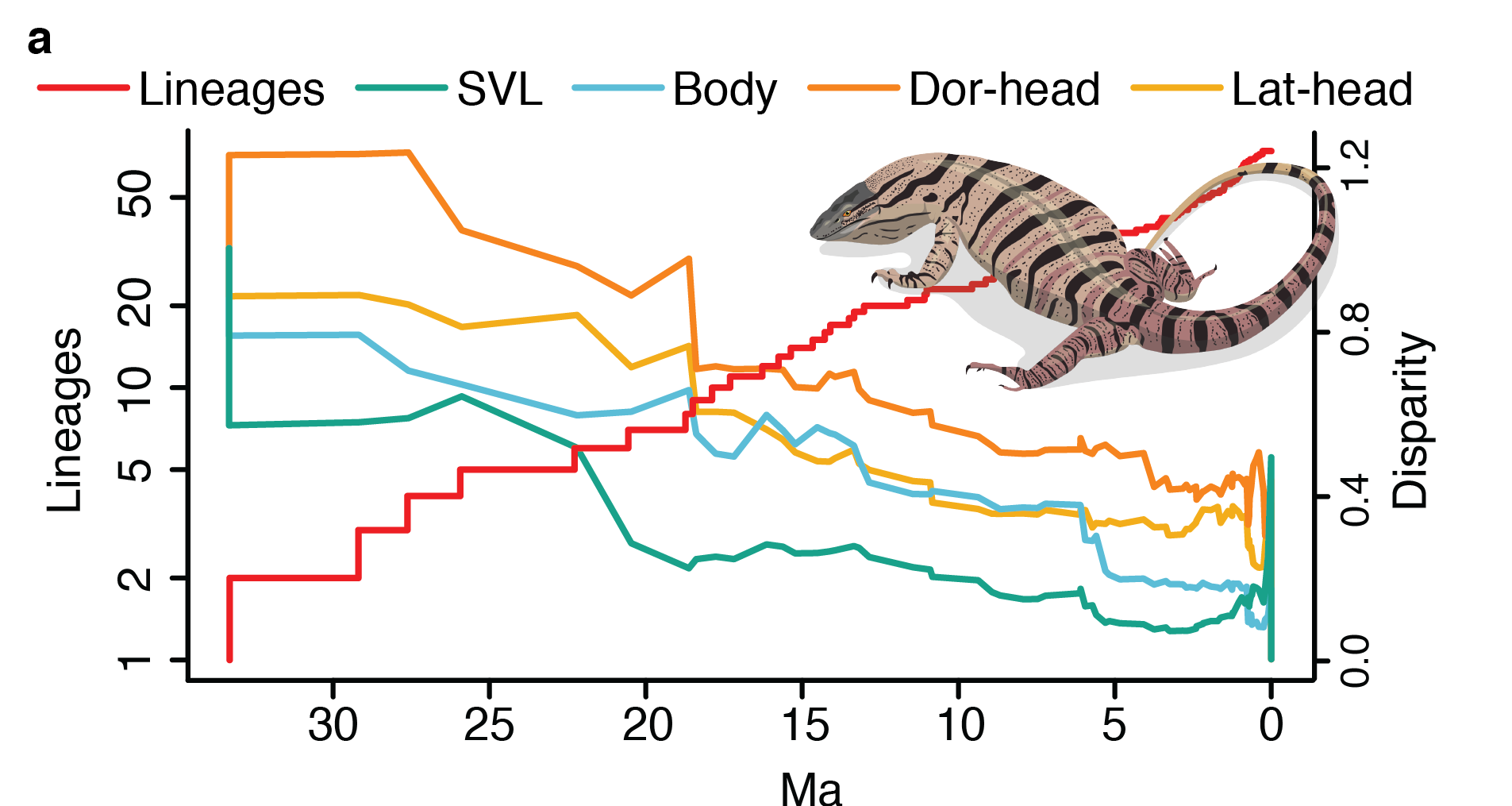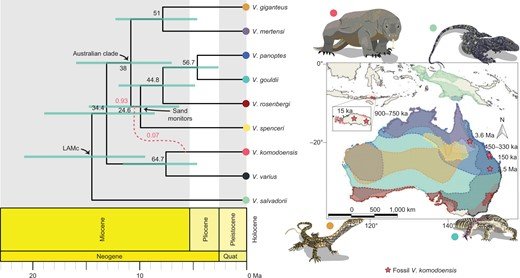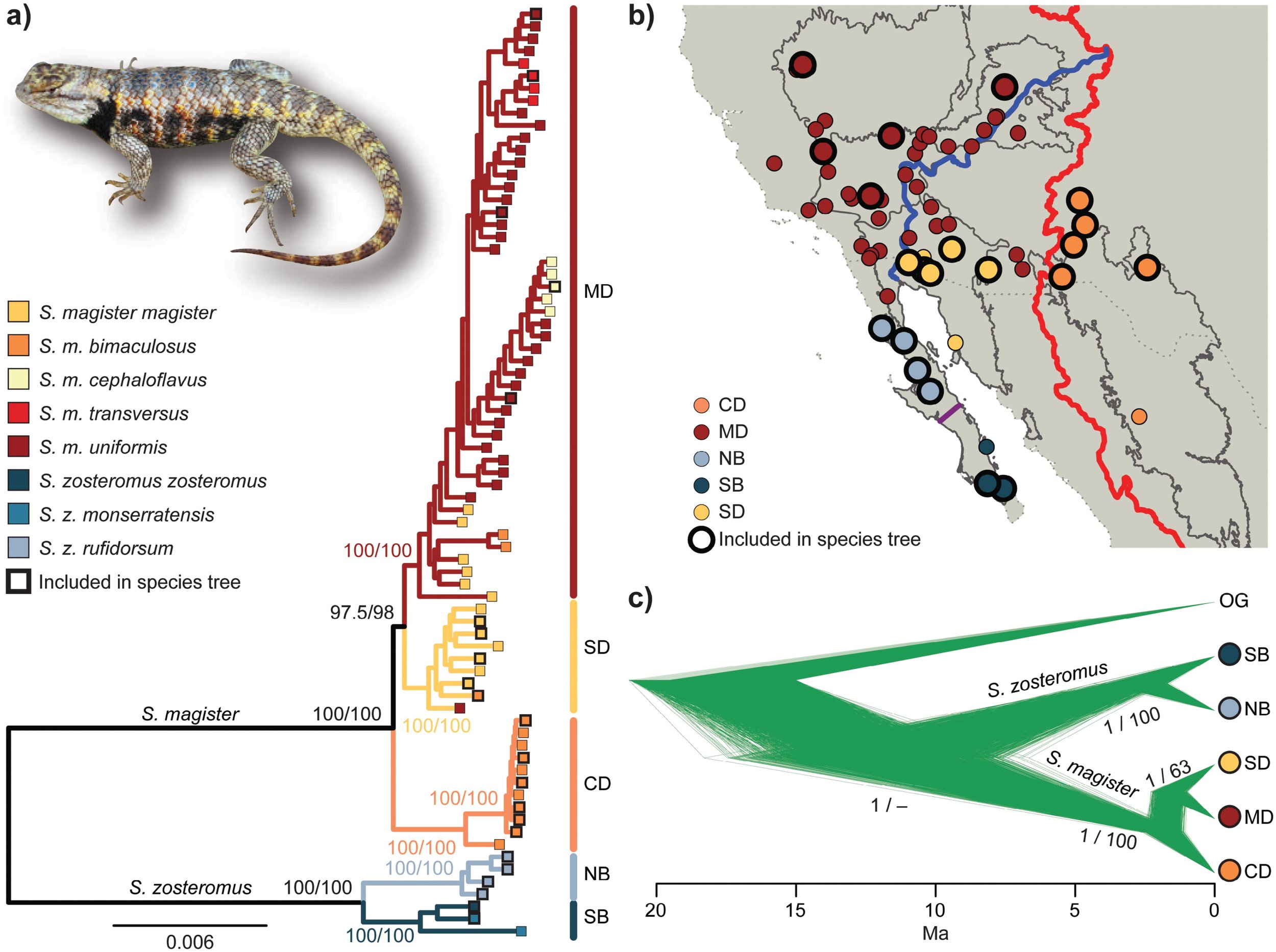
Linking micro- and macroevolution
I am mainly interested in the long-term consequences of population-level and ecological processes. In practice, I implement integrative approaches to analyze large molecular, phenotypic, and environmental datasets. Most of my work is on amphibians and reptiles, as they are an excellent system to address the questions that I am interested in. Research outcomes may be classified into three main themes: 1) the ecology of diversification, 2) hybridization and evolution, and 3) phylogeography. See how I approach these and some current projects below.
The ecology of diversification
My research focuses largely on the identification of the biotic and abiotic factors driving speciation, morphological evolution, and community assembly. I am particularly interested in the evolutionary outcomes of inter-specific competition.
Hybridization and evolution
Recent advances in the generation and analysis of DNA sequences have shown that inter-specific hybridization is common in nature. Some of my projects focus on the biogeography and long-term evolutionary consequences of hybridization.
Phylogeography
Part of my research is focused on how past and present environmental factors sort genetic variation across geographic space. A common outcome of this kind of research is the identification and description of new species.
Speciation in the deserts
Desert vertebrates are an outstanding system that helps us understand how organismic traits and environmental conditions constrain the population-level processes that lead to speciation. Current projects focus on the generation of big datasets and the development of novel methodological approaches to evaluate connectivity between North American deserts, as well as the impact of aridification on the divergence of Australian reptiles. Recently, I identified the environmental drivers of divergence in a species complex with a wide distribution in western North America. In the other side of the world, I evaluated species limits in a variable group of Australian monitors and also combined the wealth of information coming from museum specimens and community observations to distinguish between species-level divergence and variation resulting from local adaptation in another species complex.
Current research
Phylogenomics, evolution, and conservation of true salamanders and newts
I’m using a phylogenomic dataset to infer the evolutionary history of the true salamanders and newts (family Salamandridae), a diverse group that is mainly found in the Holarctic realm. I am particularly interested in geographic disparities in richness and how they correlate with environmental history and interspecific interactions. On the other hand, I secured funds recently to develop molecular tools for the hands-on conservation of an endangered salamander from Laos.
Evolution and systematics of monitor lizards
Monitor lizards (Varanidae) are a widespread and charismatic group that includes the largest (non-snake) living lizard, the Komodo dragon. I started my research on monitor lizards during my Ph.D. at the Australian National University. Previously, I showed that abiotic and biotic factors acted together to shape spatial patterns of species richness and morphological variation. Morphological diversification was allowed by the lability of postnatal ontogeny. I also found that hybridization between the Komodo dragon and a group of Australian monitors had a long-lasting phenotypic effect. The detection of hybridization also shed light on the geographic origin of the Komodo dragon. Ongoing projects are focused on the evlution and diversification of Australasian monitors.
Evolution and systematics of blue-tailed skinks
I started working on blue-tailed skinks (Plestiodon) during my master’s at the National Autonomous University of Mexico. The group is notable for its variation in reproductive traits and its disjunct distribution between eastern Asia and North America. Besides, its diversity has been underestimated, particularly in the complex Mexican highlands. Previously, I showed how the integrative analysis of morphological, environmental, and molecular data can shed light on species limits. I was also involved in a phylogenomic study of the P. brevirostris group and a study on the reproductive ecology of P. lynxe. Together with collaborators, I have described two new species: P. longiartus and P. lotus. Ongoing projects are focused on the evolution of body size and the systematics of Mexican taxa.






